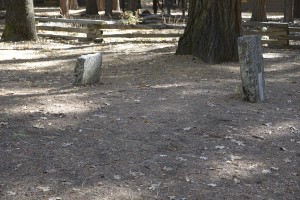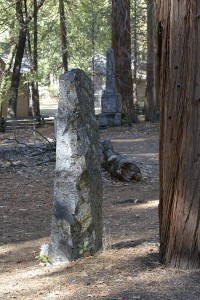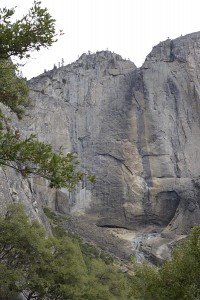While researching what to do with my father’s ashes I came across something I hadn’t known about: It’s perfectly legal to spread your loved one’s ashes within Yosemite National Park. Many (most?) municipalities prohibit doing that except for within the confines of a designated cemetery–for instance my town, San Diego, prohibits it except for burial at sea three miles out. So it was an almost astonishing surprise that one of the crown jewels of the National Park system was lots more accommodating. I haven’t researched other national parks in detail, but they appear to be equally welcoming.
You’ll need to do a couple things before making your last trip to the park with mom or pop. The overhead is pretty reasonable, though, and is detailed [ here ]. First you’ll need to obtain permission from the park. This takes place at a snail-mail timescale, so it might take a couple weeks. Next you’ll need the burial permit obtainable from your local county records office. This will cost you about eleven bucks.
The actual distribution of ashes has a few restrictions–you have to keep a certain distance from trails and waterways, for instance, and your can’t leave any permanent markers. Once the deed is done you file the permit with the local county records office.
While in Yosemite last month, thinking about last days and final resting places, I stopped by the little pioneer cemetery in Yosemite Valley.
Stereotypical Latin crosses were few. This one was the most prominent, and belongs to James Hutchings, an early Yosemite hotelier and major booster of the Sierra Nevada, partly through his publication of Hutchings’ California Magazine.
G. B. Cavagnaro’s resting place also sported a traditional marker. This one was white marble, incised with oak leaves and acorns, a nod to the landscape all around. When I entered the cemetery everything was in shade but for this shaft of brilliant white stone. Talk about theatrical.
The most beautiful and place-appropriate markers took this form, slabs of Yosemite granite, large or small, barely worked.
They reminded me of Isamu Noguchi’s sculptures at their best, or standing stones of the sort you’ll find in the British Isles. This one was as tall as I am.
No cemetery is complete without botanical remembrances. Here the flowers took the form of little plastic bouquets tucked around the stones or attached to them. I suppose it was a little sad to see the impermanent plastic flowers, but many of the inscriptions on the heavily sculpted headstones were already starting to be illegible. Nothing is permanent.



















